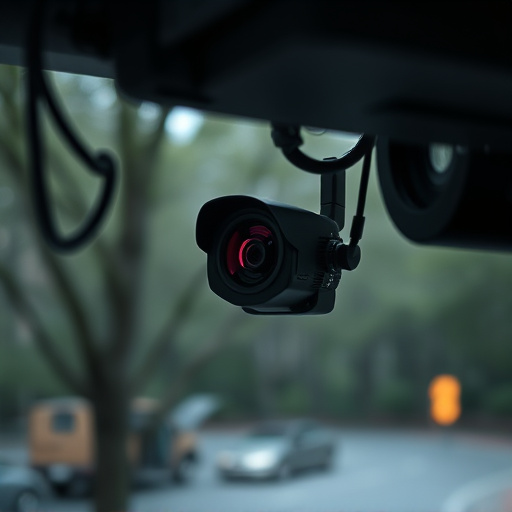Electromagnetic signal scanners detect hidden cameras like Nanny Cams disguised as household items, offering a discreet surveillance method. This technology uncovers covert devices, ensuring safety and privacy in personal and professional spaces while navigating legal and ethical considerations regarding privacy laws and cultural differences.
Uncover the world of hidden lenses and electromagnetic signal scanning, a powerful tool for home security. This guide explores innovative ways to protect your privacy by discovering disguised nanny cams hidden within everyday household items. From creative placement strategies to advanced detection techniques, we empower you with knowledge. Learn about the legal boundaries surrounding these surveillance methods, ensuring ethical practices. Get ready to navigate this modern-day enigma and secure your space effectively.
- Understanding Electromagnetic Signals and Their Scanning
- Nanny Cam Disguised: Creative Placement Ideas in the Home
- Detecting Hidden Cameras: Tools and Techniques for Safety
- Legal Considerations: Privacy Laws and Ethical Use of Hidden Lenses
Understanding Electromagnetic Signals and Their Scanning
Electromagnetic signals are an integral part of our modern world, with countless devices emitting them daily. From your smartphone to smart home appliances, these signals play a crucial role in communication and functionality. Understanding electromagnetic signals is key when employing a hidden lens electromagnetic signal scanning guide, especially when using a nanny cam disguised as household items. These signals can provide valuable insights into device operations and potential security loopholes.
Scanning for electromagnetic signals involves using specialized equipment to detect and analyze emissions from various sources. This process is essential in identifying unusual activity or unauthorized devices, such as hidden cameras (or a nanny cam). By scanning through everyday objects, like a book or a decorative item, one can uncover concealed technology, ensuring privacy and security in both personal and professional settings.
Nanny Cam Disguised: Creative Placement Ideas in the Home
In the quest for discreet surveillance, the nanny cam disguised as household items has emerged as a clever solution. Creative placement of these hidden cameras can transform everyday objects into covert observers, offering peace of mind to concerned parents and employers alike. From a stylish decorative piece to a seemingly innocuous kitchen gadget, these nannycams provide an innovative way to monitor activities without raising suspicion.
Imagine a vintage radio that doubles as a watchful eye or a beautifully crafted artwork that hides a high-tech camera—these are just some of the possibilities. With careful consideration and strategic positioning, you can ensure round-the-clock observation while maintaining the aesthetic appeal of your living space. This approach leverages the blend of function and decor to create an environment where surveillance seamlessly integrates with daily life.
Detecting Hidden Cameras: Tools and Techniques for Safety
Detecting hidden cameras has become a critical aspect of modern security, especially with the proliferation of nanny cams disguised as everyday household items. These tiny yet powerful surveillance devices can be easily hidden in plain sight, making it challenging to identify them without specialized tools and techniques.
One effective method is to use electromagnetic signal scanning devices that detect anomalies in radio frequency emissions. By employing these advanced tools, security professionals can uncover hidden cameras that are often transmitting data unnoticed. Additionally, physical inspections of common hiding spots, such as wall outlets or light switches, can reveal suspicious devices. Staying informed about the latest technologies and techniques for detecting hidden cameras is essential to maintaining a safe and secure environment.
Legal Considerations: Privacy Laws and Ethical Use of Hidden Lenses
When employing hidden lens electromagnetic signal scanning, it’s crucial to navigate a complex landscape of legal considerations, particularly concerning privacy laws and the ethical use of surveillance technology. In many jurisdictions, the installation of devices like nanny cams disguised as household items is subject to stringent regulations aimed at protecting individual privacy. These laws vary widely across regions, with some countries having more robust protections than others.
The ethical implications extend beyond legal boundaries. Using hidden lenses for surveillance raises concerns about consent, trust, and the potential invasion of personal spaces. As such, it’s essential to adhere to guidelines that promote responsible use, ensuring transparency and obtaining informed consent whenever possible. Additionally, understanding and respecting cultural differences in privacy expectations is vital when deploying these technologies.
The hidden lens electromagnetic signal scanning guide highlights the importance of staying vigilant in an era where privacy is increasingly at risk. By understanding electromagnetic signals, creatively placing “nanny cams” disguised as household items, utilizing advanced detection tools, and being aware of legal boundaries, we can ensure a safer and more secure living environment. Remember that while these measures offer enhanced security, it’s crucial to respect privacy laws and use such technology ethically.
